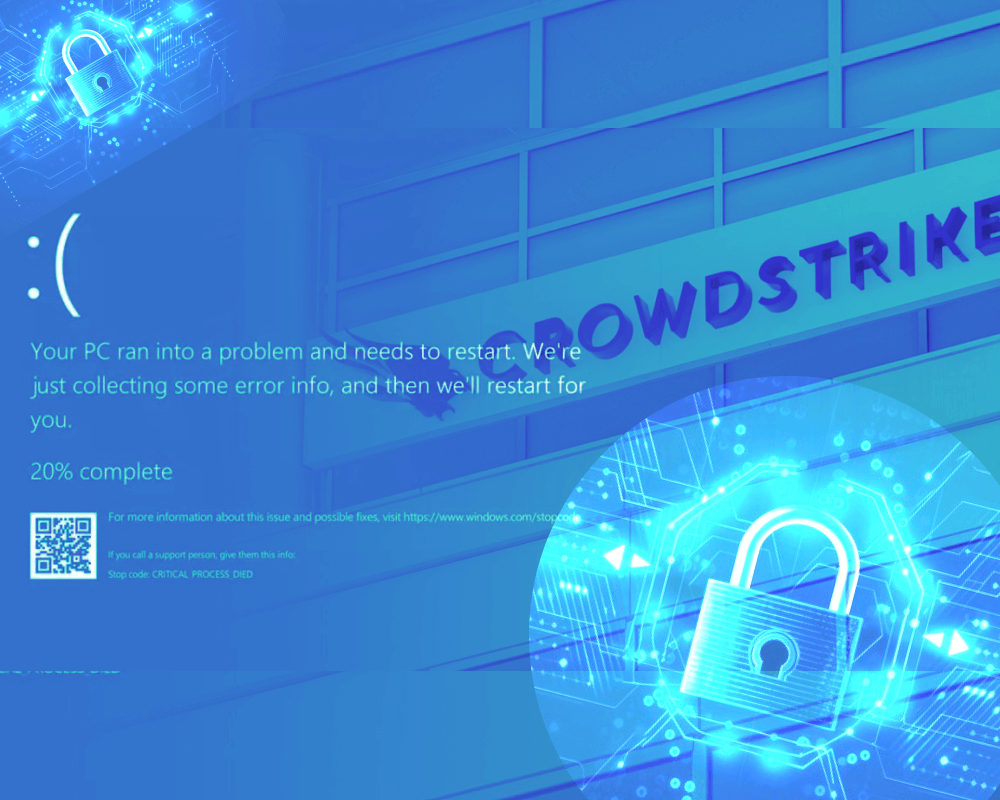July 25, 2024 By: JK Tech
The recent outage caused by a flawed CrowdStrike update has cast a long shadow over the cybersecurity industry. While the investigation is ongoing, experts are coming to terms with the possibility of similar incidents becoming a recurring concern.
At the heart of the issue lies CrowdStrike’s core offering – endpoint protection, a sophisticated antivirus program specifically designed for businesses. Here’s where Microsoft comes in: Microsoft Windows is the dominant operating system for business PCs, and CrowdStrike’s software integrates with Windows to provide its protective layer. CrowdStrike regularly updates its software to combat cyber threats, but their latest update caused massive havoc. Systems across a wide range of devices – from company PCs to self-service kiosks – came to a standstill, emphasizing the interconnected nature of our digital world and the potential ripple effect of a single mistake.
CrowdStrike’s aggressive update schedule is driven by the intense world of cyber threats. Ransomware attacks, such as the well-known WannaCry, have the potential to rapidly cause widespread disruption. To stay ahead of these threats, security companies like CrowdStrike prioritize speed over caution to ensure their clients have the latest defenses in place. This approach makes sense in theory as a proactive strategy is crucial to prevent cyberattacks. However, the CrowdStrike incident highlights the inherent risks of pushing updates without proper safeguards.
Traditionally, software updates are rolled out in stages, a cautious approach that minimizes potential damage. If a bug or incompatibility surfaces, it only affects a limited number of users, allowing for swift mitigation. Unfortunately, CrowdStrike opted for a mass rollout, essentially placing all their eggs in one basket. This gamble backfired, demonstrating the critical role of staged deployments in safeguarding system stability.
In the aftermath of the outage, fingers have been pointed in various directions. Some argue that CrowdStrike’s dominant market position creates an unhealthy concentration of power. Others point fingers at regulations or limitations imposed by Microsoft on antivirus software. However, a closer examination suggests these might be convenient scapegoats.
The uncomfortable truth is that complex systems are inherently prone to errors. In this scenario, the cause could be a programming mistake or an unforeseen combination of events that led to a critical failure. The human element, such as a programmer’s oversight or miscalculation, can never be completely ruled out. Furthermore, the complex interaction between different software components can occasionally result in unexpected and catastrophic outcomes.
CrowdStrike’s main function is to protect against cyberattacks, but the outage was a different type of security incident. It caused systems to become unavailable, compromising one of the fundamental principles of information security – data accessibility. Organizations depend on continuous access to their data to operate efficiently. The CrowdStrike outage showed how a seemingly harmless software update can disrupt these crucial processes, potentially leading to financial losses and damage to reputation.
The key takeaway from this incident is that similar occurrences are likely to become more common. Our increasing dependence on complex, interconnected systems creates vulnerabilities that are difficult to predict and even harder to rectify. The ability to swiftly recover from such disruptions will be paramount in the future. Moving forward, cybersecurity companies need to strike a delicate balance between speed and stability. Rigorous testing procedures and staged deployments are no longer optional but essential safeguards.
Organizations need to move beyond a purely reactive approach to cybersecurity. Implementing disaster recovery plans and building redundancy into their systems can significantly enhance their resilience in the face of unexpected outages. The CrowdStrike incident serves as a stark reminder that even the most robust defenses can be breached. By acknowledging this vulnerability and taking proactive steps, we can build a more secure digital future.



